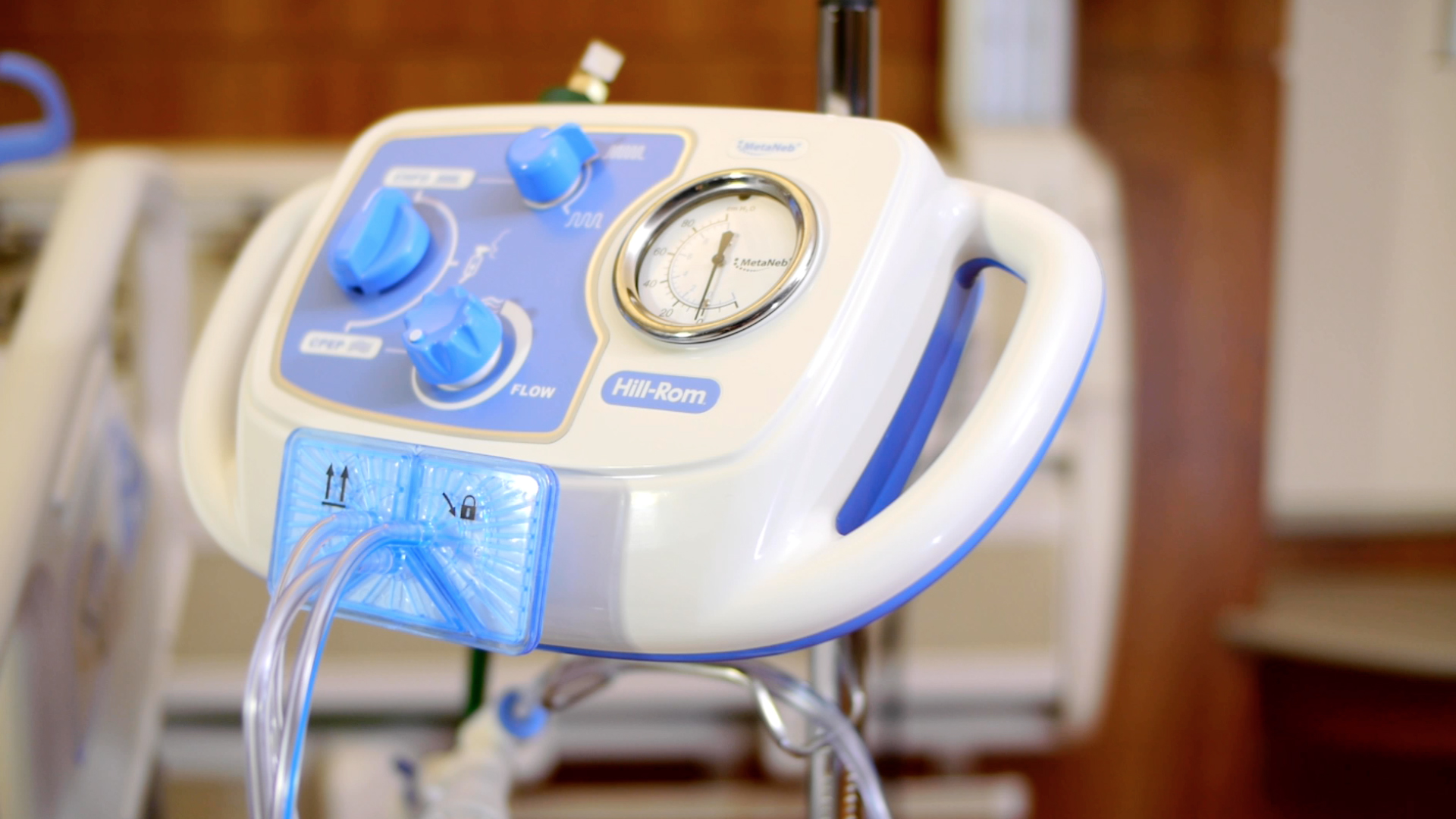The journey of care isn’t over for patients once they’re wheeled out of the OR. Just as healthcare professionals must constantly seek out life-saving innovations for the surgical suite, the devices and approaches that can make a significant difference during the recovery process merit keen attention.
The MetaNeb System, offered by Hill-Rom, addresses post-surgical respiratory problems that can impair a patient’s recovery. A lung-expansion therapy, MetaNeb enhances mucus clearance and helps resolve or fully prevent patchy atelectasis.
A new study suggests the device is having a real, measurable impact on recovery, especially for high-risk patients.
Recently presented at the Society of Critical Care Medicine (SCCM) Annual Congress, the research by Toan Huynh, MD, and colleagues specifically considered the incidence of post-operative pulmonary complications (PPCs) in high-risk patients, evaluating the impact of strategically employing aggressive pulmonary utilizing the MetaNeb system.

(Image credit: Hill-Rom)
“Researchers from three medical centers in the U.S. examined the efficacy of integrating the MetaNeb System in the respiratory care for patients undergoing major chest or abdominal surgery,” explains Huynh. “The results demonstrated that incorporating MetaNeb therapy led to a significant reduction in postoperative pulmonary complications, less time on mechanical ventilation, and reduced hospital length of stay.”
The study included 417 patients and found that use of the MetaNeb system decreased PPCs from 22.9 percent to 16.4 percent.
“The MetaNeb System, by mobilizing mucous secretions and lung expansion, may have contributed to these clinical improvement,” Huynh says.
A 2015 study published in Expert Review Respiratory Medicine indicated that PPCs might beset post-surgical patients at ratea as high as 40 percent, emphasizing the benefit of taking a proactive approach.
“These results have significant implications in the care of surgical patients who are at high risk for postoperative pulmonary complications, since the integration of MetaNeb System into the respiratory care not only results in reduced complications, but also reduced ventilator time and length of stay in the hospital,” notes Huynh. “Together, these quality improvements may lead to reduced hospital expenditures and better value-based care for this patient population.”




